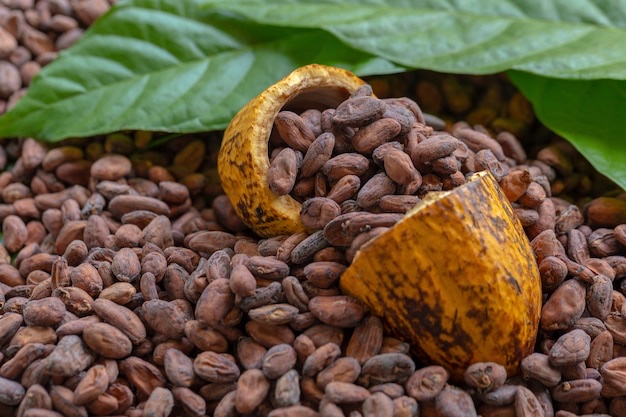Most of the world’s cacao beans are grown by farmers in West Africa, where harsh weather is the root of the crop’s problems.
With cocoa futures in New York more than doubling from the same period last year, cocoa bean prices have soared to all-time highs. Cocoa futures reached a record high of £6,180 per ton on Tuesday in London trading.
At this point, the harvest of cocoa is falling short for the third consecutive year. Due to uncertainty about new crops, regulators in the top-producing Ivory Coast once completely stopped selling contracts for cocoa exports. They traded at £1,968 on the same day in the previous year.
Crop yields in Ghana and Ivory Coast, which together produce about two-thirds of the world’s cocoa beans, have been impacted by bad weather.
About 44% of the world’s supply is thought to come from Ivory Coast, and Ghana contributes about 14% of the output.
Due to cocoa’s extreme sensitivity to weather fluctuations, particularly warmer temperatures, the cash crop is incredibly vulnerable.
Drier and hotter weather can also spread diseases to crops, which could have a long-term negative impact on the quality of the farming land and result in a subpar harvest.
The El Niño weather pattern from the previous season caused abnormally high temperatures and rainfall, which severely damaged crops.
According to data firm Gro Intelligence, the total rainfall in the cocoa-growing regions of Ivory Coast in 2023 was the highest in 20 years. This year, El Niño has caused severe drought on the cocoa farms, further decreasing production
Extreme weather patterns have also had an impact on other commodities. Rice plantations in Thailand and India are being impacted by droughts. Brazil is the world’s largest sugar exporter, and its exports have been impacted by torrential rain
Years of massive cocoa output, especially in the neighboring Ivory Coast, which produces nearly half of the global supply, have kept prices low generally.
According to the Nigeria Export-Import Bank, the global cocoa industry is worth $200 billion annually. West Africa, which produces 75% of the world’s supply, makes less than $10 billion annually from the industry
For consumers in the West, that may be good news, but in this case, it has prevented financially strapped farmers from making investments in their cocoa plantations.
The Cocoa Farmers Association of Nigeria reported that fires destroyed more than 30 hectares of cocoa farmlands early last month in one of the core-producing states in southeast Nigeria.
The demand for chocolate throughout the world is only increasing in the interim. The recent double-digit increase in demand for cocoa has resulted in a significant shortage.
Demand is expected to exceed supply by more than 370,000 tons this year, according to projections from the International Cocoa Organization.
Large chocolate producers, such as Nestlé and Cadbury, have been increasing their prices to compensate for the increased costs of labor and cocoa principally. More price increases may occur later this year, as they have hinted.
According to Barry Callebaut, 18% of its employees will be let go. After reporting an 11.5 percent decline in profits year over year for the fourth quarter of last year, Hershey’s, a popular American chocolatier, also announced plans to reduce five percent of its workforce.
